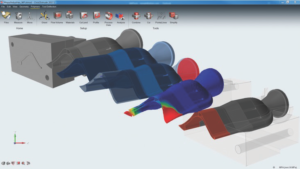
This is done by setting up your loads and constraints and using the ‘loads’ dialogue to import a spreadsheet that populates this data for you automatically from your given data source.Īlso on the loading conditions front, there has also been work to make motion simulations more useful in the optimisation process and to allow you to include spot welding contacts between appropriate forms. While Inspire has for some time allowed you to define multiple load cases that feed into the optimisation process, these can be time consuming to set up.įrom the 2018 release onwards, you’ll be able to import load cases and load table values via spreadsheet format (as CSV or XLS files), whether you want to quickly generate those loads, reuse the data from existing FEA studies in other systems or from physical tests. Most products have multiple load cases that need to be accounted for, rather than a single, idealised case. Those that already use topology optimisation will know that basing your processes on a single load case isn’t the wisest of moves.
Solidthinking inspire optimize add material to result update#
The first update we’ll cover is how you define your load cases. Not only does solidThinking Inspire contain the basics in terms of modelling tools for domain design (as well as healthy import options), but also, in recent releases, we’ve seen the introduction of manufacturing constraints (for draft angle and such), motion simulation (alongside the standard linear static analyses) and PolyNurbs, which allow you to very quickly use a sub-D-like approach to interactively model smooth forms over your optimised mesh forms.Īdvertisement solidThinking Inspire – load case definition Since its 2013 launch, solidThinking Inspire has proved itself to be one of the most readily accessible set of topology optimisation tools that we’ve seen and its headstart on the competition means it is now much further down the road than many. But while the company’s high-end tools like OptiStruct have long been used in aerospace, for example, it wasn’t until the release of its Inspire application that things got really interesting.

SolidThinking Inspire now allows you to explore the potential for using lattices as part of your optimisation processesīut one vendor in particular has been banging this particular drum for a good decade or more – and that’s solidThinking, along with parent company Altair.


 0 kommentar(er)
0 kommentar(er)
